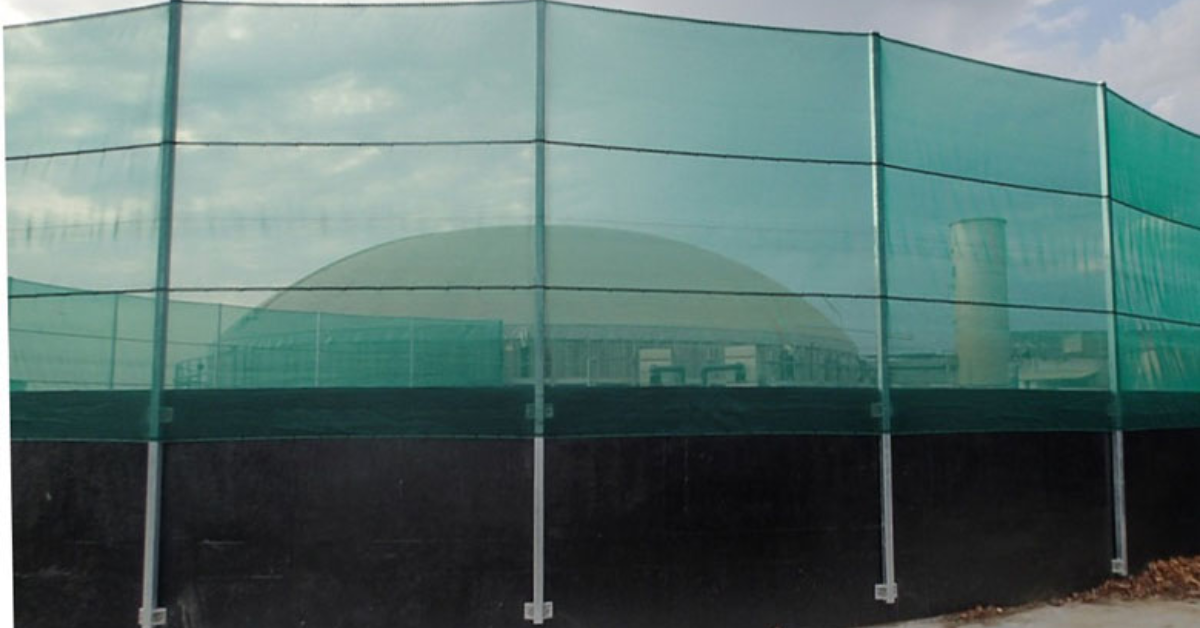The Vital Role of Fireman Lift Protector in Safeguarding Lift Interiors
In high-rise buildings and multi-storeyed complexes, elevator (or “lift”) systems are essential for facilitating vertical mobility. However, when maintenance, repair, or emergency operations are underway, these interiors are vulnerable to damage from tools, cables, debris, and general wear and tear. That is where the Fireman Lift Protector comes in—a protective covering designed specifically to shield lift interiors from physical harm during such activities. The Fireman Lift Protector acts as a resilient barrier between the lift cabin’s internal walls, floor, doors, and the external forces imposed during maintenance or use under duress. By absorbing impacts, resisting punctures, and preserving the finish and structural integrity of the lift, it plays a key role in extending the life and appearance of elevator interiors.
What Is a Fireman Lift Protector?
A Fireman Lift Protector is a heavy-duty protective covering or padding applied to the surfaces inside a lift shaft or cabin—walls, ceilings, door frames, floors—during maintenance, repair, construction, or when heavy equipment or tools must be transported through the lift. Constructed from durable canvas, reinforced fabrics, or thick synthetic materials, the protector is engineered to withstand abrasion, puncture, and tearing. Some versions are also water-resistant or fire-retardant, offering extra safeguards against accidental spills or fire hazards.
Unlike generic protective sheets, a Fireman Lift Protector is tailored for lift interiors—custom sizing, cutouts, and anchoring methods ensure full coverage without compromising functionality of doors, safety sensors, or lighting. The name “fireman lift protector” is drawn from its usage in emergency or fire department scenarios, where lifts are often commandeered for evacuation or fire-fighting equipment movement; but its utility spans any situation requiring enhanced protection.
Why Use a Fireman Lift Protector?
Using a Fireman Lift Protector offers several critical advantages:
1. Prevent Damage to Finish & Surfaces
Lift interiors often feature polished stainless steel, glass, high-quality laminates, or painted metal. Tools, wires, scaffolding, and construction debris can scrape, dent, or chip these surfaces. A protector absorbs or deflects these impacts, keeping the aesthetics pristine.
2. Extend Lifespan of Lift Components
Repeated damage to interior panels, door tracks, or floor carpeting can lead to expensive repairs or replacements. The protector helps shield these vulnerable elements, reducing maintenance costs and downtime.
3. Safety & Liability Mitigation
By providing a buffer, the protector helps reduce the risk of sharp edges, loose debris, or damaged surfaces that could injure personnel. Also, in the case of accidental damage, the costs and liability fall on fewer surfaces when a purposely designed protective barrier is in place.
4. Adaptability Under Heavy Load Use
When moving heavy or awkward loads through a lift—machinery, crates, scaffolding parts—the protector accommodates such movement without compromising the surfaces underneath.
5. Ease of Installation & Custom Fit
Modern Fireman Lift Protectors are modular, with anchoring methods that attach securely but can be removed once work is done. Because they can be custom manufactured per lift cabin dimensions, they avoid interference with door operation and sensors.
Key Features That Good Fireman Lift Protectors Must Offer
When evaluating or specifying a Fireman Lift Protector, there are several essential features to look for:
1. High Tensile Strength & Durability
The material should resist tearing under stress. It must retain integrity while absorbing shocks or impact from tools or equipment.
2. Abrasion & Puncture Resistance
Surfaces may be scratched against bolts or sharp objects. The protector must stand up to repeated contact without breaking down.
3. Customizability in Size & Shape
Lift cabins vary—in height, width, door location, wall-mounted controls, and sensor placements. A one-size cover won’t work universally. Good protectors allow cutouts and custom shapes to match interior obstacles.
4. Anchoring Options / Secure Mounting
Velcro, snaps, elastic bands, or loops are common. The mounting must hold the protector flush to surfaces without sagging, yet be removable when needed.
5. Resistance to Moisture, Oils, & Chemicals
During maintenance, spillage of fluids or lubricants is possible. A protector that resists absorbing fluids will prevent stains or damage underneath.
6. Lightweight Yet Strong Materials
For ease of handling, storage, and installation, the protector should balance strength and weight. Bulky or overly heavy coverings can slow work and make retrofit difficult.
7. Fire-Retardant or Fire-Resistant Qualities (if necessary)
In fire-related operations or where electrical work is underway, a protector with fire resistance adds an extra safety layer.
Typical Applications of Fireman Lift Protectors
1. Elevator Maintenance & Repair
During routine servicing—motor replacement, inspection of hoisting cables, track alignment—tools and equipment must traverse the cabin. A protector guards against incidental contact damage.
2. Renovation & Construction Work in Buildings
When redecorating or modifying floors, walls, or infrastructure, construction crews often use the lift to shift heavy items. Without protection, walls and doors are at risk of damage.
3. Emergency & Firefighting Operations
In urgent scenarios, fire departments or emergency teams may convert lifts temporarily for movement of equipment, casualty evacuation, or heavy gear. The protector safeguards the interior during these intense, rapid-movement operations—hence the “fireman” designation.
4. Moving Heavy Appliances or Furnishings
In commercial or residential settings, during relocation of bulky items (furniture, HVAC units, large cabinets), lift interiors need protection from impact or abrasion.
5. Logistics / Freight Elevators in Industrial Environments
Even “cargo lifts” in warehouses or industrial facilities benefit from protection when repeatedly used for heavy or sharp-edged loads.
Choosing or Specifying a Fireman Lift Protector
Here is a step-by-step guide to choosing an effective protector:
Step 1: Measure & Map the Lift Interior
Obtain accurate dimensions for each wall, ceiling, and floor. Note locations of control panels, doorways, vents, lighting, sensors, and any obstructions. A precise layout ensures proper customization.
Step 2: Determine Load & Stress Conditions
Estimate the type of loads, frequency of use, and potential sharp or heavy equipment transit. This helps choose the right material thickness and reinforcement.
Step 3: Select the Material
Based on the anticipated stress and environment, choose between heavy-duty canvas, reinforced synthetic fabrics, or composite laminate. If moisture or chemicals are a concern, ensure appropriate coatings or properties.
Step 4: Specify Cutouts & Mounting Scheme
Plan for necessary holes or cutouts—for control panels, lighting, sensors, emergency intercoms. Decide on mounting strategy: Velcro side straps, snap buttons, elastic bands, adhesive strips, or hooks.
Step 5: Evaluate Fire Safety Ratings (if needed)
If the lift will be used in environments with fire risk (for example, in fire rescue settings), ensure the protector meets local fire safety and flammability standards.
Step 6: Ease of Removal & Maintenance
The protector should be removable for cleaning, repair, or storage. The design should permit quick detachment and reattachment without damaging surfaces.
Step 7: Durability and Warranty
Check manufacturer guarantees, expected life cycles, and performance benchmarks (abrasion cycles, tear strength) to ensure long-term value.
Real-World Benefits & Case Scenarios
Case A: An Office Building Under Renovation
In a high-rise office undergoing refurbishment, contractors are frequently moving drywall sheets, metal frames, machinery parts via the passenger elevator. Without protection, walls would accumulate scuffs, dents, and gouges. With a Fireman Lift Protector installed, all such movement happens against a sacrificial layer—once the project is over, the interior is still in “as-new” condition.
Case B: Fire Department Uses During Emergency
A fire brigade uses the elevator during a fire to move heavy rescue gear to upper floors rapidly. The walls, door frames, and corners are shielded by the protector as equipment is rushed in and out, minimizing damage under stress.
Case C: Ongoing Maintenance in a Residential Tower
Routine servicing of a lift—cable checks, pulley replacement, sensor alignment—requires tools and parts frequently passing through. Having a protector in place ensures that even repeated ingress/egress doesn’t chip walls or bend moldings.
In all these scenarios, costs avoided from repair, repainting, or component replacement justify the upfront investment in a high-quality protector.
Installation & Maintenance Tips
-
Pre-clean the surfaces: Before mounting the protector, ensure the lift’s surfaces are clean and dry, free from dust or debris, so adhesives or fasteners grip reliably.
-
Start with ceiling and back wall first: In most cabins, begin with attaching the uppermost or rear panels to ensure alignment, then work outward.
-
Overlap seams carefully: Where two protector panels meet, ensure slight overlap or interlocking edges to prevent gaps from exposing the surface.
-
Secure edges well: Use strong fixtures—hooks, Velcro, snaps, tied loops—to prevent edges from peeling or catching.
Challenges & Considerations
While Fireman Lift Protectors offer clear advantages, there are a few potential challenges:
-
Initial Cost & Custom Fabrication
The bespoke nature of good protectors means they cost more upfront than generic sheets. Custom fabrication (cutouts, fittings) adds to this cost. -
Fit Issues in Atypical Lift Configurations
Some lifts have curved walls, irregular recesses, or unique sensor placements. Ensuring a perfect fit may require advanced customization or modular paneling. -
Interference Risks
If not properly designed, the protector could obstruct doors, sensors, or emergency intercoms—care must be taken to maintain functional integrity. -
Wear Over Time
Even the best materials degrade under constant abrasion. Therefore replacement planning must be factored into lifecycle maintenance. -
Storage & Handling
Large panels can be cumbersome to store or transport. Users must take care not to damage protector panels during handling.
The Fireman Lift Protector and Long-Term Asset Value
Buildings, especially those with elevators, are significant capital investments. Maintaining the visual appeal and functional integrity of elevators contributes to property value, tenant satisfaction, and operational efficiency. The Fireman Lift Protector is a relatively small investment compared to repainting, panel replacement, or downtime—yet it yields compounding returns over time:
-
Minimized repair costs
-
Reduced refurbishment downtime
-
Extended aesthetic lifespan
-
Lower liability from accidental damage
-
Improved professionalism and upkeep reputation
From the standpoint of facility management, installing a Fireman Lift Protector is a preventive measure—an insurance premium on one of the more vulnerable and visible assets in any multi-story structure.
Conclusion
A Fireman Lift Protector is more than just a fabric shield; it is a critical tool for protecting the interior of lift cabins from damage during high-stress usage, maintenance, and emergency operations. By absorbing impact, deflecting abrasion, and safeguarding surfaces, it preserves the aesthetic and functional quality of elevators while cutting repair costs and extending service intervals.
Choosing the right protector involves careful measurement, material selection, custom fitting, and maintenance planning. When properly designed and installed, the protector becomes a silent guardian—ensuring that no matter what is moved through the lift or what operations are undertaken, the cabin remains unscathed.







